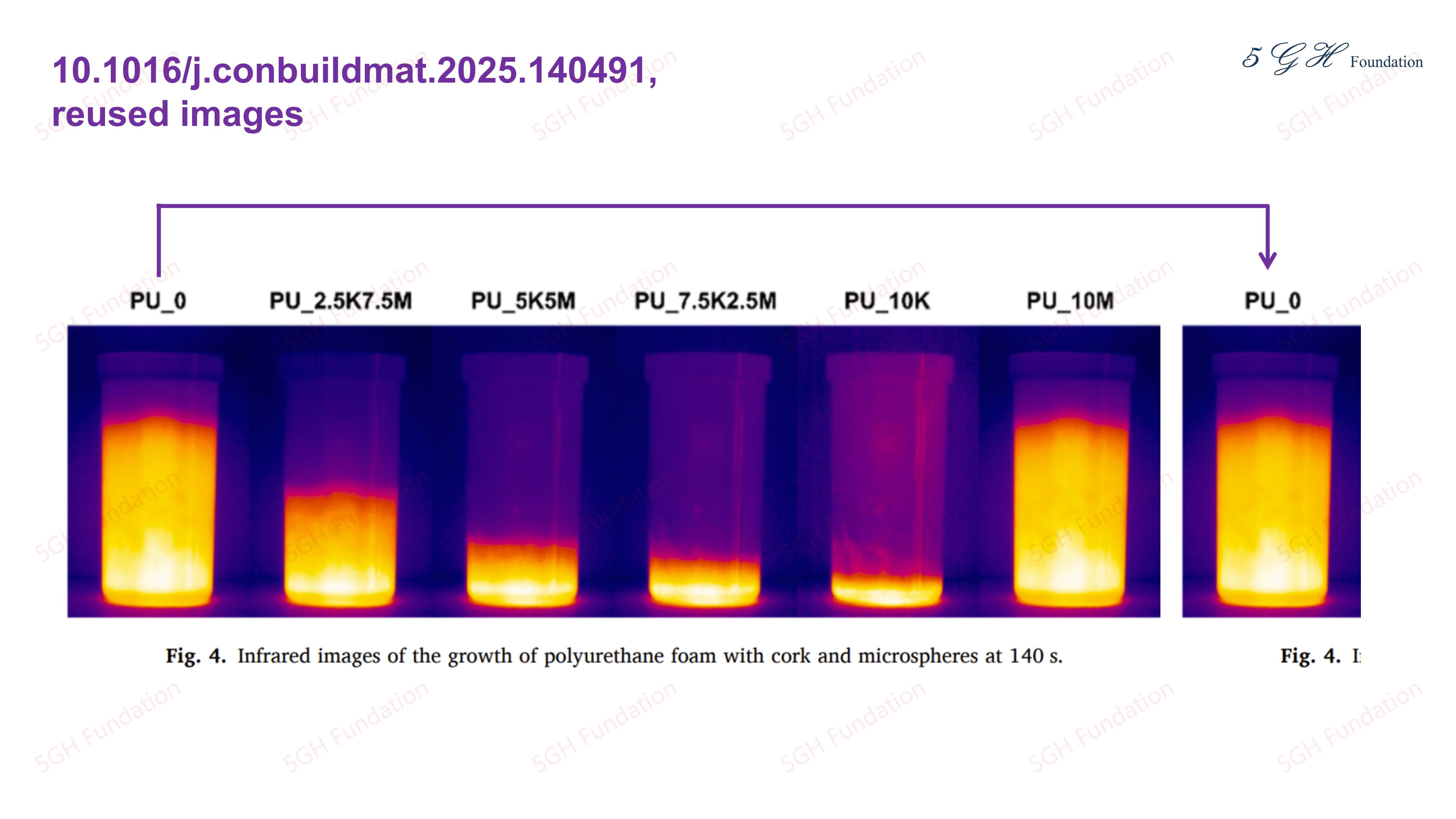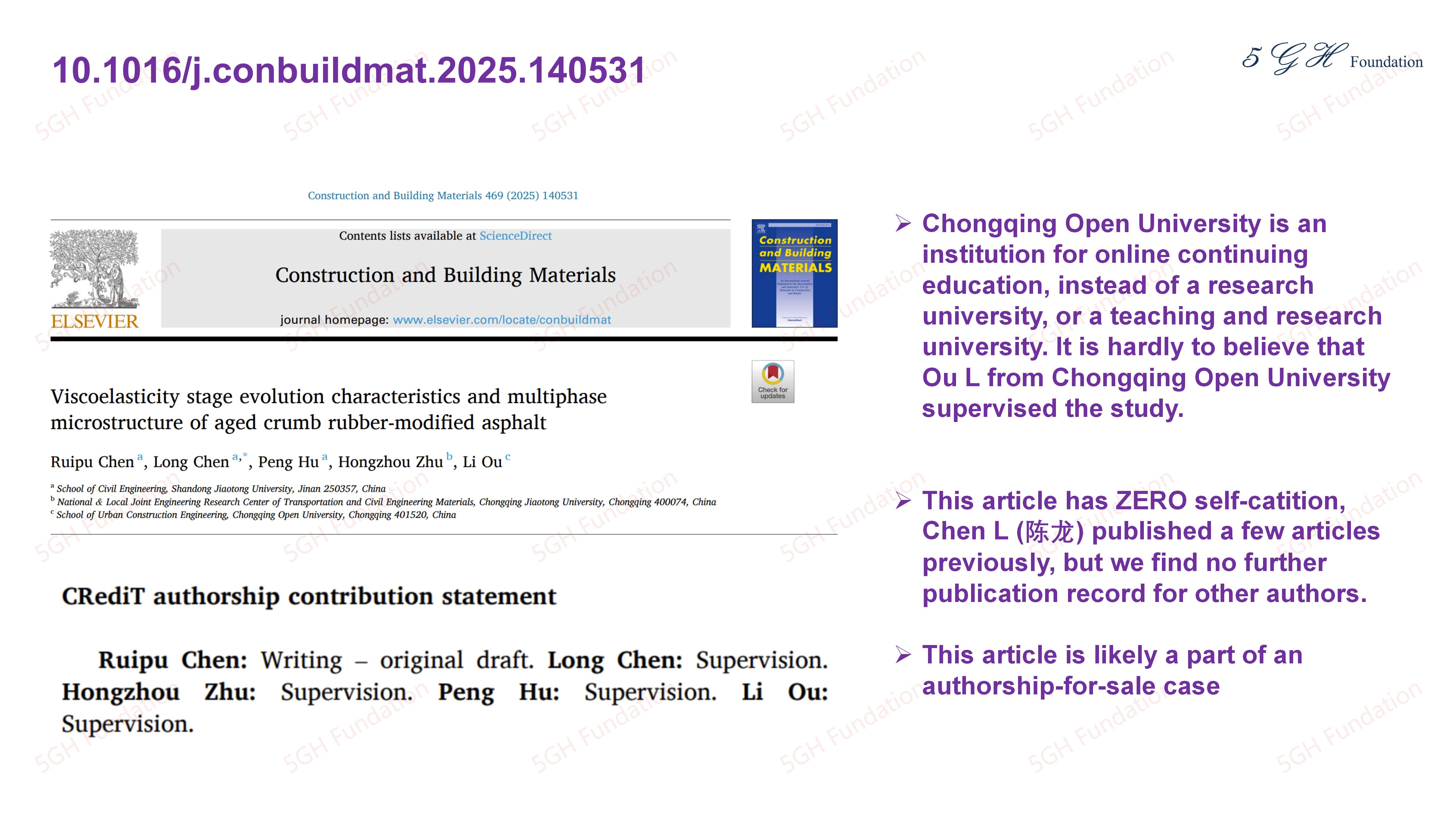Journal Quality Report on "Construction and Building Materials"
Recently, the 5GH Team analyzed the all 56 articles published on Volume 469 of the journal "Construction and Building Materials", an Elsevier title, and found 12 of them (about 21.4%) have major issues, including reused spectra/images, problematic authorship, abnormal data patterns, as well as abnormal noise patterns of the published spectra. The high percentage of the problematic articles suggests that this journal does not maintain high quality editorial and peer review process. Based on these results, the 5GH Team assigns the Journal Quality Index [1] for "Construction and Building Materials" to be E.
10.1016/j.conbuildmat.2025.140414
Identical noise patterns are observed from the lines on Figure 4 of this article, which is likely resulted from improper experimental setups.
10.1016/j.conbuildmat.2025.140484
Unreasonable asymmetrical error bars are observed on Figure 4 of this article. The data shows no order-of-magnitude changes, and their measurements are not log-scaled, therefore, the asymmetrical error bars are very confusing.
10.1016/j.conbuildmat.2025.140487
A XRD pattern is reused on Figure 15 (a), (b), (c), and (d). Neither the figure caption or the main text of the article addresses the differences between Figure 15 (a), (b), (c), and (d). The main text stated that "combined with the strength test results, it is evident that the strength of the samples in group (e) decreases significantly after calcination at 800 ◦C, and the strength was almost zero, while the samples containing zeolite seed still maintain high strength", however, no "(e)" is shown on the Figure 15. Therefore, the spectra shown on Figure 15 are confusing.
10.1016/j.conbuildmat.2025.140491
Reused images are observed on PU_0 panel and PU_10M panel of Figure 4.
10.1016/j.conbuildmat.2025.140496
Two pairs of reused XRD patterns are observed on the Figure 5 (a) and (b) of this article: (1) MF0 line and MF1 line on Figure 5 (a), and (2) MF0 line and MF1 line on Figure 5 (b).
10.1016/j.conbuildmat.2025.140497
Abnormal patterns of the data on Table 4 are observed on this article. Data on column D50 and D90 have same last digit number of 0, while the data on column D10 do not exhibit this pattern.
10.1016/j.conbuildmat.2025.140507
Abnormal data patterns are observed on Table 5 of this article. The data on IOTs, MS, and WR columns has same last digit numbers of 1, 4, and 1, respectively, which is unusual in real measurements.
10.1016/j.conbuildmat.2025.140508
The noise patterns for the black line and the red line on Figure 5 (b) of this article are identical to each other. This is unusual, and it may be resulted from improper experimental setups.
10.1016/j.conbuildmat.2025.140509
Unreasonable asymmetrical error bars are observed on multiple figures, including Figure 8, 9, 10, 11, 13, 15, 16, and others, of this article. The data shows no order-of-magnitude changes, and their measurements are not log-scaled, therefore, the asymmetrical error bars are very confusing.
10.1016/j.conbuildmat.2025.140515
Some peaks on Figure 11 (d) and (h) of this article were inconsistently assigned. For example, the peak around 0.9 keV on Figure 11 (d) was assigned to Cu, while the peak around same position on figure 11 (h) was assigned to Fe. These inconsistent assignment raises concerns about these EDX spectra on this article.
10.1016/j.conbuildmat.2025.140524
Identical noise patterns are observed from the light purple line and the pink line on the Figure 9 (a) of this article, which is likely resulted from improper experimental setups.
10.1016/j.conbuildmat.2025.140531
The authorship of this article is concerning. (1) Chongqing Open University is an institution for online continuing education, instead of a research university, or a teaching and research university. It is hardly to believe that Ou L from Chongqing Open University supervised the study. (2) This article has ZERO self-catition. Although Chen L (陈龙) published a few articles previously, but the 5GH Team find no further publication record for other authors. These two reasons suggest that the authorship of Ou L is questionable.
Reference












